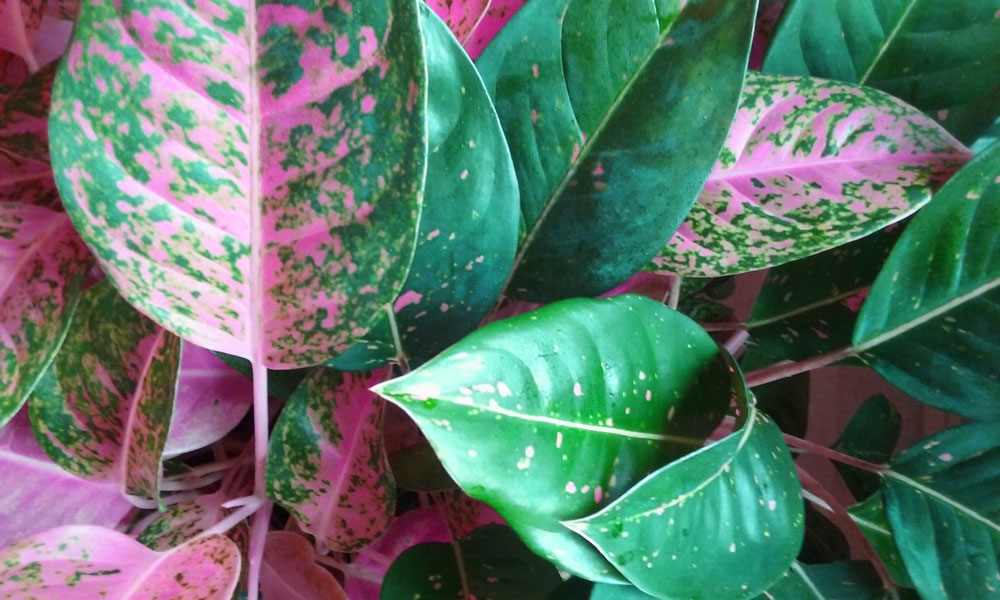Table Of Content
Perfect for indoors or outdoors, this plant can grow up to 14-feet tall (although it can also be pruned back to a more manageable height). Lady palms prefer indirect light, moist soil and can thrive in almost any temperature. If you have the space, try a bamboo palm (these trees can grow from 4 to 12 feet tall and 3 to 5 feet wide). Place the palm in a well-soiled planter in indirect sunlight and water it when the surface feels dry. Elevate any interior with this trailing plant, whether in a regular or hanging planter. The fast-growing plant is easy to keep healthy — just place it in low to bright in-direct sunlight and water it when the soil feels dry.
Where to plant a palm tree
It's actually an epiphyte, meaning it doesn’t even need soil to thrive. Most of the time, you'll see air plants displayed inside glass terrariums or hanging from pieces of wood. No matter which display route you take, give 'em bright light, and mist occasionally. You spend a lot of time in your bedroom, so it's important to design a space that ensures you get a good night's rest. Echeveria, sedum, lithops and haworthia are just a few varieties. Avoid humid areas such as bathrooms or kitchens; instead, opt for dry conditions with warm temperatures from 64-75˚F (18 – 24°C).
Costa Farms Fiddle Leaf Fig Tree
Place beside a window for optimal care, and water once per week. Bird of paradise is eye-catching and will easily add interest to your living room. Low maintenance, this plant only needs to be watered weekly to stay spry.
How do you know when—and how much—to water your houseplants?
Use your DIY skills to create hanging planters that are unique and fun. To expand your collection, learn how to propagate your indoor plants for a low-cost way to add more greenery—or share with friends. The many diverse forms and colors of calathea plant (Calathea spp.) have made it a popular houseplant. It enjoys a warm, humid environment of 65°F or warmer and lots of filtered light.
Fiddle Leaf Fig

Mint and basil give off an inviting scent, while begonia and chamomile have beautiful flowers that provide a warm welcome. "In the sun, hang basil, mint, begonias, or chamomile, and don't forget to water daily in the summertime heat." Fittonias not only sit so pretty on a window sill or your little one's bookshelf, they also help to purify the air which will aid in keeping your kiddie healthy.
The shapely trunk will add an important vertical element to your modern garden's planting. A palm will also cast dappled shade and throw decorative shadows on patios and walls. Meanwhile a dramatically uplit palm tree transforms the night garden. Adorn your space with a stunning string of pearls, named for the plump bead-like leaves that run along each trailing stem! Although this unique succulent is beautiful to look at, it's considered high maintenance, requiring six to eight hours of sun followed by diffuse light or shade for the rest of the day.
In addition, our health and sustainability experts reviewed ingredient lists to ensure products are in accordance with guidelines set forth by the U.S. Our experts have also tried Wondercide's Insect Repellant, which uses a similar plant-based formula in a convenient 4-ounce bottle. Efficacy tests are ongoing, but both the rosemary and lemongrass formulas have a fairly mild scent and don't leave behind an oily residue. Here's another option for eliminating mosquitoes at their source. Stick one of these small (but mighty) circles in any bird bath, pond, plant tray or flood-prone area up to 100 square feet to kill mosquito larvae for 30 days. Keep in mind that this isn't a solution for getting rid of existing bugs.
Our pick of the 10 best indoor plants
5 best indoor screening plants to protect your privacy - Tom's Guide
5 best indoor screening plants to protect your privacy.
Posted: Wed, 20 Dec 2023 08:00:00 GMT [source]
While beautiful, this beloved tree can be finicky to care for as it requires lots of light and a warm, humid climate, similar to its native tropical home. This hardy, low-light tolerant plant can go weeks between waterings and has shiny, waxy leaves. Caring for aloe vera can be tricky, but that doesn't make it any less popular. This popular succulent requires lots of sunlight and very little water. It's well-known for the cooling, healing gel that can be applied topically to burns. Once you get used to having a few green gals, you'll learn to speak their language and know the signs of thirst.
Red Prayer Plant
Pilea plants have succulent-like features so they will not mind if you forget about them once in a while. Water these plants once a week, place them in a location with bright, indirect light, and feed them regularly with cacti based fertilizer to ensure the best growth. Keep in mind that they also need well-draining soil to stay healthy. These plants are pretty different to grow than most indoor plants, as they do not require any soil at all. Besides, their leaves are shaped like the slender tentacles of a sea creature or an alien, making them truly peculiar. There are various species of air plants, having silver or green foliage and different tolerance to environmental conditions.
Avoid cold drafts and direct sun, which can scorch their leaves. These trees do well when they are exposed to full sun and generously watered when the soil starts to dry. Do not worry about the watering frequency, as they can tolerate occasional under-watering and over-watering. In summer, they require weekly feeding with organic liquid fertilizer, then you can reduce it during the winter. Their leaves are hypnotic, but you should avoid touching them, as they are completely poisonous.
Water this plant only when the top inch of the soil is dry, and make sure it gets bright, indirect light. The rubber tree will add a little pop of color with red veins hidden under its leaves. Also known as the Swiss cheese plant, this tropical plant can tolerate missed watering sessions and prefers indirect to medium light.
For a true showstopper with lots of blooms, don’t let the soil completely dry out and give it plenty of sunlight. Many of our houseplants originate from tropical regions where the tree canopy constantly filters sunlight. However, some plants, especially those native to South Africa and Australia, need a lot of sunshine to thrive indoors. You can transform a sunny and bright room by adding a plant that needs direct sunlight, filtered sunlight, or a very bright light when grown indoors. On top of that, plants can improve the aesthetics of your bedroom with very little effort on your end.
The tropical succulent with fleshy leaves and spiky edges doesn't require frequent watering, but it does need bright light, so consider putting it on your bedroom windowsill. Avoid direct sun hitting the foliage as it will scorch, but place in a light, bright spot for the healthiest deep green leaves. This plant reaches around 30 inches high (75cm) and will thrive in temperatures 64-75˚F but can cope with lows of 53˚F. Naturally found in rainforests, this plant needs indirect sunlight, humid temperatures, and water to grow.
You might think most palm trees are pretty similar but in fact there are over 2,500 different species to choose from. They come in all shapes and sizes, from petite ones that suit pots or under planting to majestic towering types that make a statement. Palms add a sensory touch with the rustle of fronds shifting in the breeze, and beautifully textured trunks. Plant one to introduce an architectural element that will anchor your design with its bold, symmetrical foliage.
It does best in bright, indirect sunlight and it's the perfect size for a window sill, end table or plant stand. Also known as Pilea Peperomioides, the low-maintenance plant is a popular Feng Shui plant as it's widely known to bring luck and positivity. With glossy, heart-shaped leaves, the Philodendron Heartleaf is a fast-growing and super forgiving houseplant that thrives in low to bright light.























